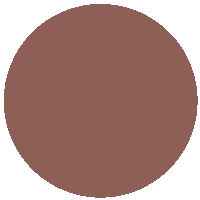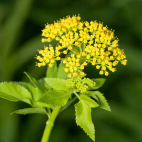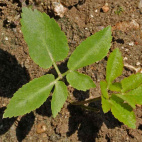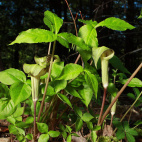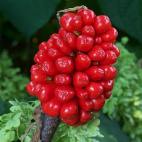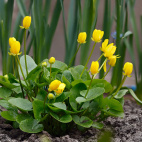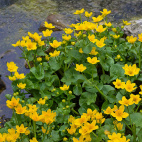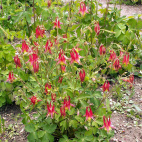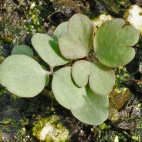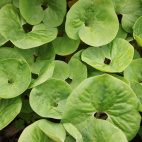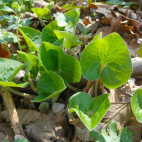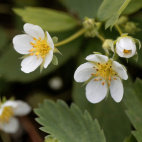Color
Availability
USDA Zone
Region
Type
Duration
Season
Germination
Soil
Sunlight
Height
Use
Narrow Your Search
Color
Availability
USDA Zone
Region
Type
Duration
Season
Germination
Soil
Sunlight
Height
Use
Wildflower Seeds - Northern Region
The Northern region is home to our Canadian friends in the eastern provinces, as well as the northern-most part of the Eastern US. This area is characterized by a long, cold winter with lots of snow, and a short humid summer that only lasts about 3 or 4 months. Most of the area is classified as a UDSA Growing Zone 4 or less, and the species that grow here have interesting ways to perpetuate themselves in spite of the short growing season. There are a lot of forests and wetlands in this region, so adequate moisture is hardly ever a problem. Look up your growing zone to make sure that the Northern wildflower seeds that you want to grow are winter hardy. Alternatively, just order annual flower seeds online so that the plant does not need to make it through the winter, but can reseed itself and come back from seed the next year.
-
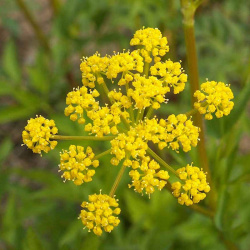 On Sale!
Golden Alexanders Seeds
Zizia aurea
These lacy yellow clusters begin to show at the beginning of spring. In the wild, these native perennials are often found growing in moist areas with dappled light. This species is often a component of native seed mixes because the early blooming flowers are a critical food source for pollinators.Quick Viewx
On Sale!
Golden Alexanders Seeds
Zizia aurea
These lacy yellow clusters begin to show at the beginning of spring. In the wild, these native perennials are often found growing in moist areas with dappled light. This species is often a component of native seed mixes because the early blooming flowers are a critical food source for pollinators.Quick ViewxGolden Alexanders Seeds
Zizia aurea
These lacy yellow clusters begin to show at the beginning of spring. In the wild, these native perennials are often found growing in moist areas with dappled light. This species is often a component of native seed mixes because the early blooming flowers are a critical food source for pollinators.
$3.48 Pkt - $9.54 / Oz -
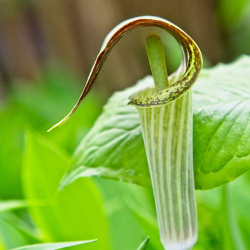 Store in the FridgeOn Sale!
Jack in the Pulpit Seeds
Arisaema triphyllum
Named for its resemblance to a preacher in a canopied pulpit, this unusual plant sends up a hooded flower. This fascinating native plant grows in woodland and marsh areas across much of the Eastern US.Quick View$3.75 Pkt - $54.00 / Oz
Store in the FridgeOn Sale!
Jack in the Pulpit Seeds
Arisaema triphyllum
Named for its resemblance to a preacher in a canopied pulpit, this unusual plant sends up a hooded flower. This fascinating native plant grows in woodland and marsh areas across much of the Eastern US.Quick View$3.75 Pkt - $54.00 / Oz -
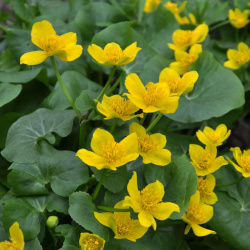 Store in the FridgeOut Of Stock
Marsh Marigold Seeds
Caltha palustris
Traditionally known as cowslips or kingcups, marsh marigolds often bring the first spring color to their native marsh. Thriving in bogs and swamps, they also make a lovely addition to a water garden.Quick View$3.75 Pkt - $200.00 / Oz
Store in the FridgeOut Of Stock
Marsh Marigold Seeds
Caltha palustris
Traditionally known as cowslips or kingcups, marsh marigolds often bring the first spring color to their native marsh. Thriving in bogs and swamps, they also make a lovely addition to a water garden.Quick View$3.75 Pkt - $200.00 / Oz -
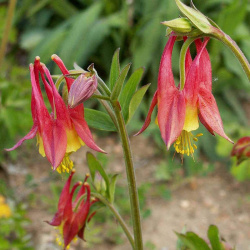 Wild Columbine Seeds
Aquilegia canadensis
Especially attractive to hummingbirds, this wildflower is a perfect choice for nature-lovers. The delicate red and yellow blossoms can grow in the open garden, but they seem to do better with some shelter and shade.Quick View$3.48 Pkt - $26.00 / Oz
Wild Columbine Seeds
Aquilegia canadensis
Especially attractive to hummingbirds, this wildflower is a perfect choice for nature-lovers. The delicate red and yellow blossoms can grow in the open garden, but they seem to do better with some shelter and shade.Quick View$3.48 Pkt - $26.00 / Oz -
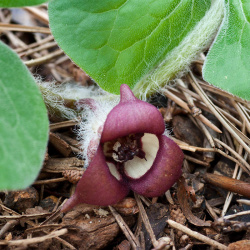 Store in the FridgeOut Of Stock
Wild Ginger Seeds
Asarum canadense
While the reddish-brown flowers are often overlooked, this pretty wild ginger plant is valued for its decorative foliage. It also makes an excellent low ground cover for shaded areas.Quick View$3.75 Pkt - $160.00 / Oz
Store in the FridgeOut Of Stock
Wild Ginger Seeds
Asarum canadense
While the reddish-brown flowers are often overlooked, this pretty wild ginger plant is valued for its decorative foliage. It also makes an excellent low ground cover for shaded areas.Quick View$3.75 Pkt - $160.00 / Oz -
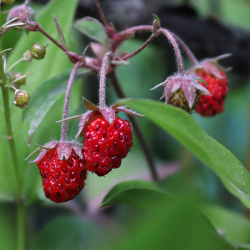 Wild Strawberry Seeds
Fragaria virginiana
Native to the United States, this plant bears tiny, wild strawberries. They are flavorful and sweet, albeit seedier than their cultivated cousins. Great for the homestead garden!Quick View$3.96 Pkt - $400.00 / Oz
Wild Strawberry Seeds
Fragaria virginiana
Native to the United States, this plant bears tiny, wild strawberries. They are flavorful and sweet, albeit seedier than their cultivated cousins. Great for the homestead garden!Quick View$3.96 Pkt - $400.00 / Oz
The Northern region is home to our Canadian friends in the eastern provinces, as well as the northern-most part of the Eastern US. This area is characterized by a long, cold winter with lots of snow, and a short humid summer that only lasts about 3 or 4 months. Most of the area is classified as a UDSA Growing Zone 4 or less, and the species that grow here have interesting ways to perpetuate themselves in spite of the short growing season. There are a lot of forests and wetlands in this region, so adequate moisture is hardly ever a problem. Look up your growing zone to make sure that the Northern wildflower seeds that you want to grow are winter hardy. Alternatively, just order annual flower seeds online so that the plant does not need to make it through the winter, but can reseed itself and come back from seed the next year.
